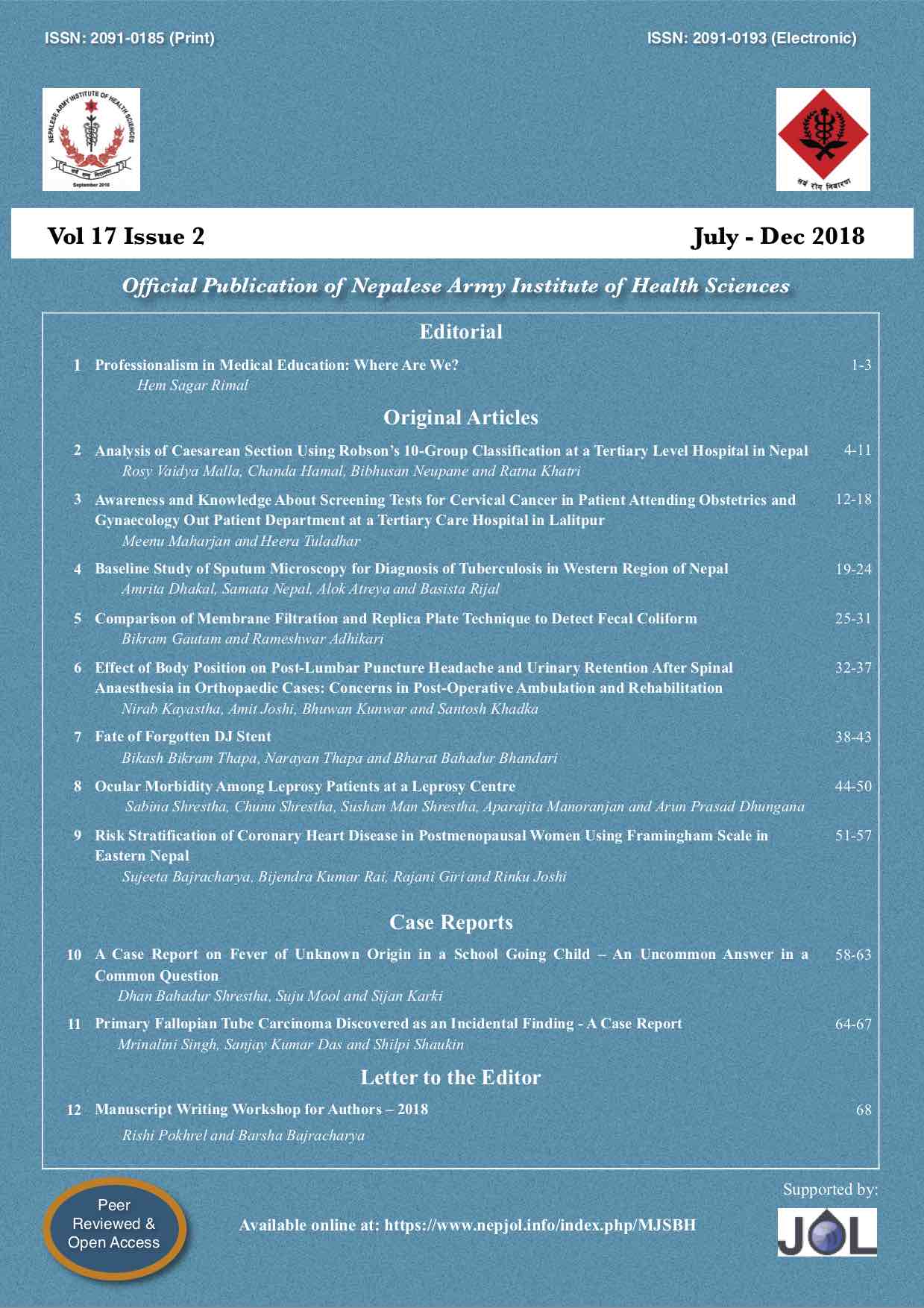Analysis of Cesarean Section Using Robson’s 10-Group Classification at a Tertiary Level Hospital in Nepal
DOI:
https://doi.org/10.3126/mjsbh.v17i2.20290Keywords:
caesarean rate, caesarean section, Robson’s 10 group ClassificationAbstract
Introduction: Obstetric Services commenced at the teaching institute where this study was conducted from Aug 2012. Hence, a review of the data of C-section in this hospital is needed for standardisation of the obstetric services in terms of the rate of C-section, its various clinical indications and maternal and fetal outcomes.
Methods: This is a retrospective study carried out over a period of 5 years from Aug 13, 2012 to Aug 11, 2017. All hospital deliveries conducted during the study period were included in this study and the patients’ details obtained from hospital records. All data obtained was recorded in master charts and analysed using SPSS version 23. The caesarean rate, its indications were calculated and categorised into groups according to Robson’s 10-group classification.
Results: A total number of 4892 deliveries were conducted over this 5-year study period. C-section was performed in 1104 patients, giving a C-section rate of 22.57%. The most common indications were previous C-section (25.4%), fetal distress (14.3%) and breech presentation (10.3%). Robson’s Group 1 was the highest contributors to the overall CS rate, contributing 28% of all C-sections, followed by Group 5 (26.8%) and Group 3 (15.5%).
Conclusions: Nulliparous and multiparous women in term pregnancy in labor and women with previous C-section contribute to more than 70% of overall C-sections at our centre. Hence, close monitoring of these groups of patients, increasing the use of instrumental delivery and practice of vaginal birth after C-section can significantly reduce the C-section rate in our centre.
Downloads
1255
805




